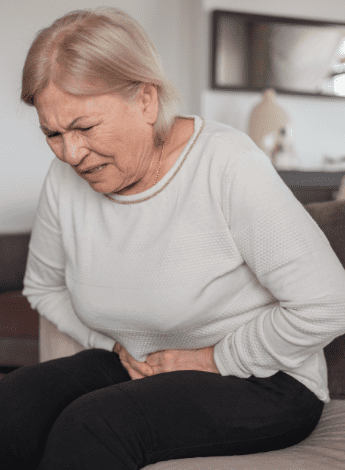
Five facts about sex and gender disparities in pain

Megan Clark and Dr Ruth Hardman of the APA Pain national group present five discussion points about the influence of sex differences (biological) and gender differences (personal and social identity) on the prevalence, experience and treatment of pain.
1. Pain prevalence is affected by sex

Many review articles report that women have a higher prevalence of pain than men, although none of these articles reported on transgender/non-binary populations.
Girls have also been reported to have a higher prevalence of pain than boys, with the incidence increasing into adolescence (LeResche 2011).
While no research has examined differences in pain prevalence for transgender youth, there is acknowledgement of pain risk factors unique to this population including emotional and physical trauma from discrimination and gender-reassignment surgery (Boerner et al 2023).
Certain conditions involve pathology within the reproductive system and therefore only occur in one sex—for example, endometriosis, vulvodynia and prostatitis (Mogil 2012).
Dysmenorrhoea, menstrual migraines and menopausal pain can occur in response to an increase in prostaglandins during the shedding of
uterine lining in menstruation and to normal hormonal fluctuations, although why only some people experience pain in response to these physiological changes is still a mystery and suggests the involvement of complex biological interactions.
This raises the question of our attitude towards the ‘normalness’ of these symptoms and our consequent willingness to provide pain interventions, such as hormone therapy, for these conditions.
2. Pain biology and physiology differ between the sexes

Biology encompasses genetics, anatomy, physiology, functional systems and the interactions between different regions of the body.
How these factors influence the input, transmission and processing of nerve impulses within the somatosensory system will dictate pain sensation, sensitivity and tolerability.
Differences between men and women in the effects of hormones, neurotransmitters and immunology on pain have been demonstrated.
While the existence of anatomical and sex hormonal differences between men and women is well known, recent studies are now documenting the influence of oestrogen on pain processing and sensitivity.
Levels of excitatory and inhibitory neurotransmitters in brain areas involved in nociceptive transmission and processing differ between male and female rats (Gabel et al 2023).
The immune cells within the central nervous system also behave differently in male and female mice to drive neuropathic pain (Mapplebeck et al 2016).
Sex differences in pain processing and sensitivity could be influenced by supraspinal mechanisms.
Differences in brain activation patterns between men and women within the descending modulatory pain system have been seen in experimental heat pain using functional MRI (Failla et al 2024).
Sex differences in brain activation patterns were also demonstrated in areas of the brain involved in the affective processing of pain when somatosensory brain-evoked potentials were measured during the application of experimental neuropathic pain (Girard-Tremblay et al 2014).
3. Gender norms can influence the expression, interpretation and treatment of pain

Gender norms are culturally influenced expectations about men’s and women’s interests, behaviours and life choices.
They may not coincide with biological sex and are affected by age, generation and culture.
Masculine and feminine gender norms in pain expression have been well documented—men are expected to repress or ignore pain and women to express it.
While women are encouraged to express pain and are viewed as more ‘sensitive’, female-dominated pain conditions that do not fit the masculine norm (such as fibromyalgia) or pain associated with menstrual cycle and menopausal symptoms (including endometriosis) become invisible, trivialised or psychologised.
These conditions are under-researched and then dismissed as medically unexplainable.
This has an impact on treatment—women are likely to experience invalidation and be given antidepressants rather than analgesia.
The impact on men in pain is less clear but higher rates of suicide and opioid use disorder may reflect a lack of attention to the psychological aspects of pain in men. Gendered social roles can also be important. For example, the caring roles often performed by women can make it difficult for people to prioritise their own health.
Strong identification with a masculine gender identity may cause people to feel threatened by the loss of strength and independence associated with chronic pain and subsequently avoid treatment or deny diagnosis.
4. An intersectional approach can help address sex and gender disparity in pain

Understanding biological sex differences in pain physiology has the potential to lead to more targeted pharmacological treatments but at present the clinical implications are unknown (Keogh 2021).
What is well established is that in any clinical encounter, both the person in pain and the clinician have their own gender identity, beliefs and expectations.
The most important task for the clinician is to be conscious of their inevitable biases (including gender, racial, socio-economic and cultural biases) and to prioritise a culturally safe, patient-centred management approach (Craig et al 2020).
Gender should be viewed through an intersectional lens as a social determinant that interacts with a range of other social factors contributing to a person’s experience.
As well as underlining the need for a person-centred approach, this draws attention to the fact that some gendered experiences (eg, intimate partner violence, gender transitioning) may be especially associated with trauma (Craig et al 2020, Boerner et al 2023).
Care should be taken in emphasising the difference between men and women.
While biological sex differences are real, an overemphasis can consolidate gendered norms and overlook individual needs. This ignores the fact that both gender and the norms associated with it are fluid (Boerner et al 2018, Samulowitz et al 2018).
5. Pain research has been male-biased from the start

Since the beginning of pain research, male subjects have been considered the norm, from which inferences are made about female and non-binary subjects.
Traditionally, in preclinical pain research, only young, male rats are used.
While male rats are chosen because they are considered more ‘predictable’ (ie, fewer hormonal fluctuations), the underlying assumption is that the male model is the standard and the female response can be extrapolated from it.
This frames the female model as deviant from or inferior to the norm, contributing to a lack of research interest in and funding of pain conditions that are predominantly or exclusively associated with women.
Clinical research into therapeutic interventions doesn’t examine sex or gender influences on efficacy or application.
Considering the many differences that occur biologically, socially and in relation to gender norms, it is very possible that men, women and non- binary people may respond differently to specific treatments.
For example, in an unpublished study on rats by Gabel et al (2023), male rats had a greater treatment response to morphine and took more days to reach the point of opioid tolerance than female rats.
Greenspan et al (2007) warns against generalising research findings from male subjects only to female subjects.
Analysis of sex/gender factors and comparison between sexes during studies will increase researchers’ ability and confidence to extrapolate data from clinical populations to the broader population.
Quick links
Course of interest
>>Megan Clark MACP is an APA Pain Physiotherapist and works in a private musculoskeletal physiotherapy clinic, Physiotas, in Devonport, Tasmania. Megan is the chair of the Tasmanian branch of the APA Pain national group.
>>Dr Ruth Hardman MACP is an APA Pain Physiotherapist and a clinician–researcher. Ruth is the clinical lead of the interdisciplinary pain service at Sunraysia Community Health Services in Mildura and a postdoctoral researcher in health equity at Sunraysia Community Health Services and the La Trobe University Rural Health School. She is a member of the APA Pain national group.
© Copyright 2025 by Australian Physiotherapy Association. All rights reserved.





